
9th & 10th September, Westpoint Arena, Exeter. 100s of suppliers, seminars, expert advice. Explore all the options, all in one place – only at Build It Live.
Book your free tickets now
9th & 10th September, Westpoint Arena, Exeter. 100s of suppliers, seminars, expert advice. Explore all the options, all in one place – only at Build It Live.
Book your free tickets nowOpen-plan house design is a popular trend, giving homeowners the chance to create a modern, flexible and light-filled living environment. Whether your project involves an extension, renovation or you’re self building a new house, well-considered open-plan living could create a relaxed, communal and harmonious feel in your home.
The most well-known example of open-plan living is probably the multi-purpose kitchen-diner; perhaps running into an extra living or play area.
But kitchen-diners aren’t the only option for going open-plan. So, when designing your new home or extension, it’s important to first consider what you actually want to achieve and how you’ll use the space. That’s where a good architect or designer can really help.
Generally, open-plan rooms work best when each function is given a designated zone – rather than turning the whole space into one general room. There are many ways to delineate different elements of an open-plan living space, such as changes in floor coverings, clever use of lighting, different floor levels (perhaps with a short flight of steps between), bespoke shelving, double-sided fireplaces and more.
However, there are considerations to bear in mind when planning an open-plan living area. If you need to knock down internal walls, for instance, then it’s vital to first seek guidance from a structural engineer. When opening out rooms, you may also need to assess the newly created space’s energy efficiency: do you need to upgrade insulation or change heating systems? Acoustic performance is a consideration, too, as noise will travel more easily in an open-plan home.
Here, I’ve put together a collection of impressive open-plan home designs to inspire your next building project, showing what you can create with a carefully considered scheme.
Pad Studio was initially commissioned to refurbish an old cottage on this plot in the New Forest, but planners recommended that the property was knocked down and rebuilt.
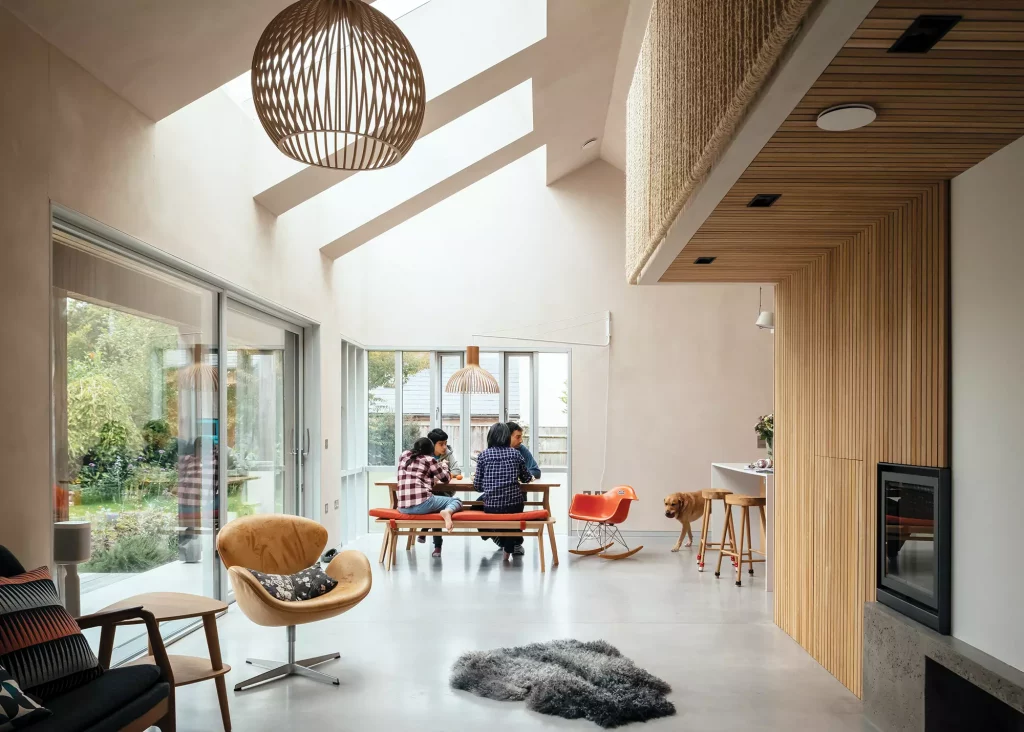
Photo: Jim Stephenson
The kitchen, dining and lounge are within an open L-shape space. Glazed doors and rooflights tick the boxes for natural light and that indoor-outdoor feel.
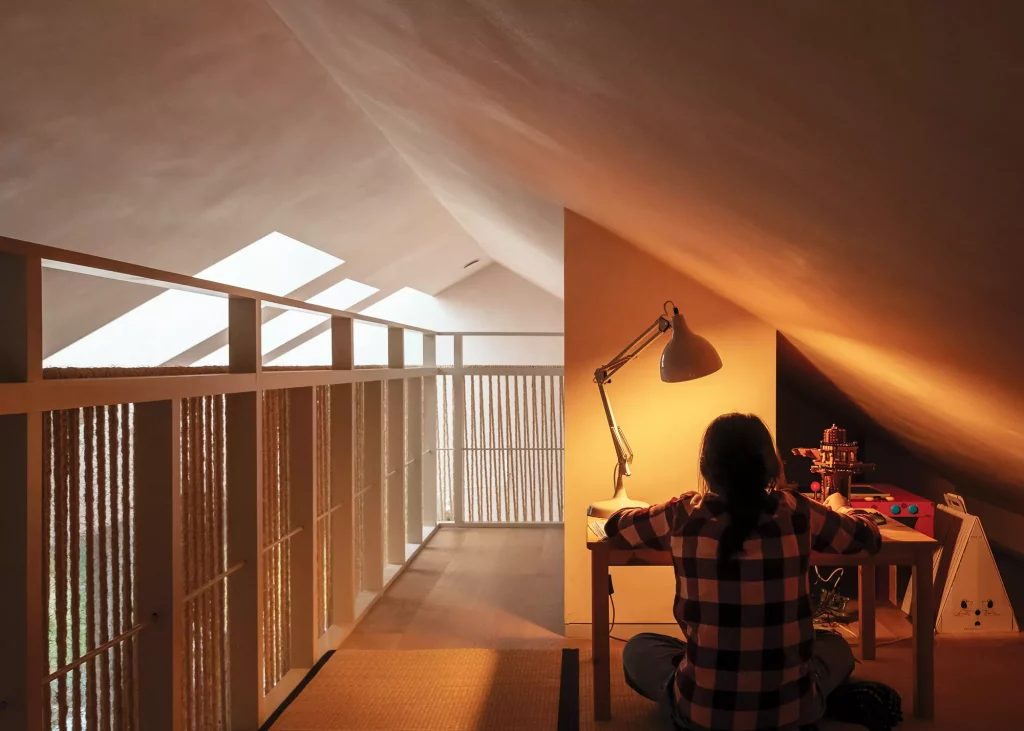
Photo: Jim Stephenson
The house has several mezzanine levels, positioned up in the vaulted ceiling. The one overlooking the open-plan area has space for a cosy study, while those in the bedrooms provide extra living space within the restricted floorplan. The organic-feeling design features different flooring materials to indicate shoes-on and shoes-off spaces.
Read More: How to get Planning Permission in a Conservation Area
This new 320m2 coastal property in Suffolk was designed by IF_DO. An open plan kitchen-dining-living space is at the centre of the building, sandwiched between wide spans of sliding glazed doors.
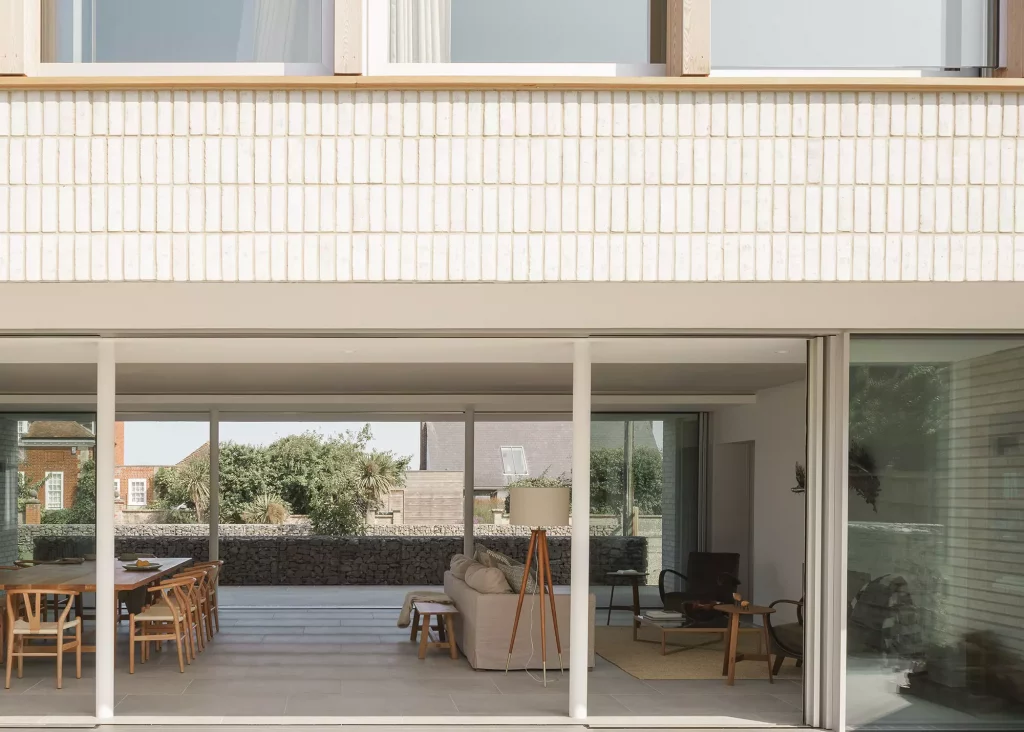
Photo: Nick Dearden
The scheme works to blur the boundaries between inside and out, with views to woodland on one side and over the street towards the sea beyond on the other.
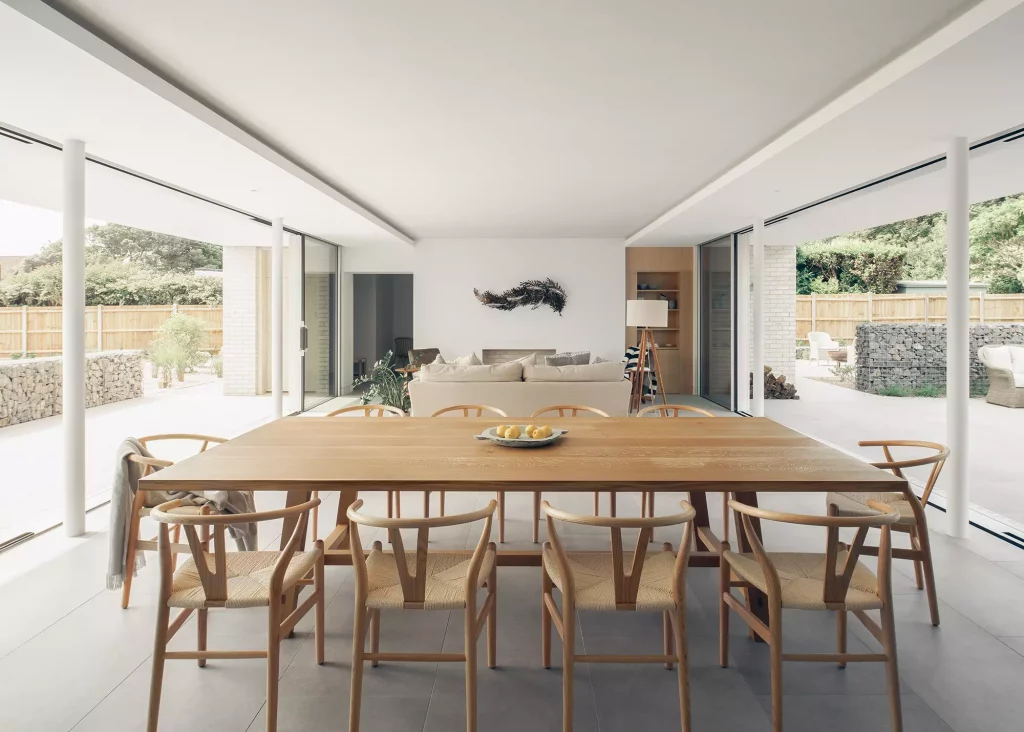
Photo: Nick Dearden
The neutral colour palette aims to blend the house with the sandy tones and textures of its surroundings.
More Inspiration: 9 Stunning Coastal Home Projects
The Pros and Cons of Open-Plan LivingIn the past, kitchens were separated from dining rooms, while living rooms were positioned at the front of the home. These days, more people expect connected spaces that combine several zones and functions. What are the benefits of this open-plan approach and how can you tackle the potential problems? Pros
Cons
|
The compact footprint of this London townhouse has been transformed thanks to a clever and colourful vintage-style renovation by Studio Hagen Hall.
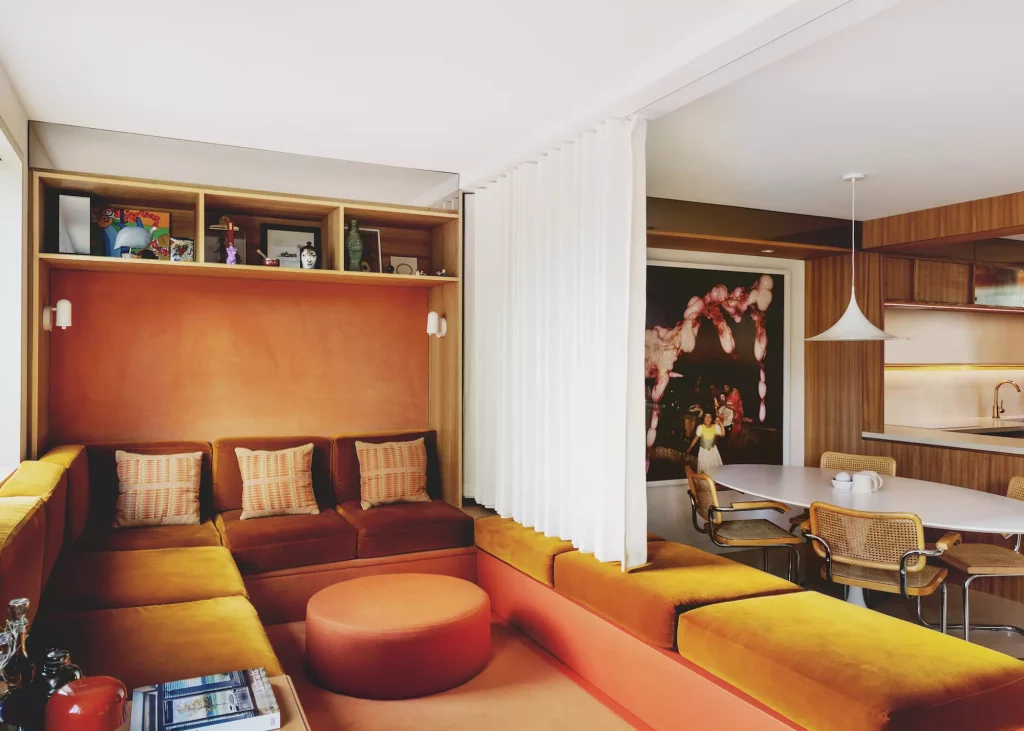
Photo: Mariell Lind Hansen
The upper ground floor has clearly defined areas thanks to use of materials and built-in divides. A half wall creates a window into the kitchen, while the bespoke velvet sofa clearly indicates a separation between diner and lounge.
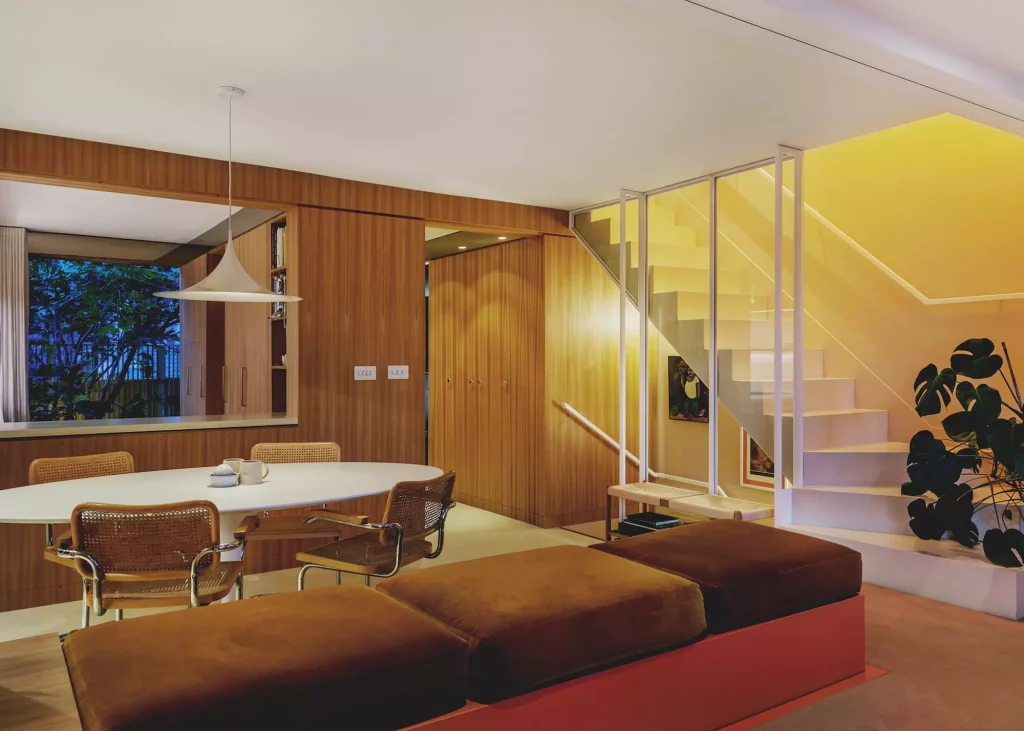
Photo: Mariell Lind Hansen
A curtain can be pulled between these spaces to offer flexible privacy. This simple yet effective fabric partition is also used in the ensuite bedroom.
Studio Jayga Architects created this kitchen extension to a 1930s semi-detached house in Essex. A split level layout integrates part of the original building with the kitchen-diner that sits flush with the garden.
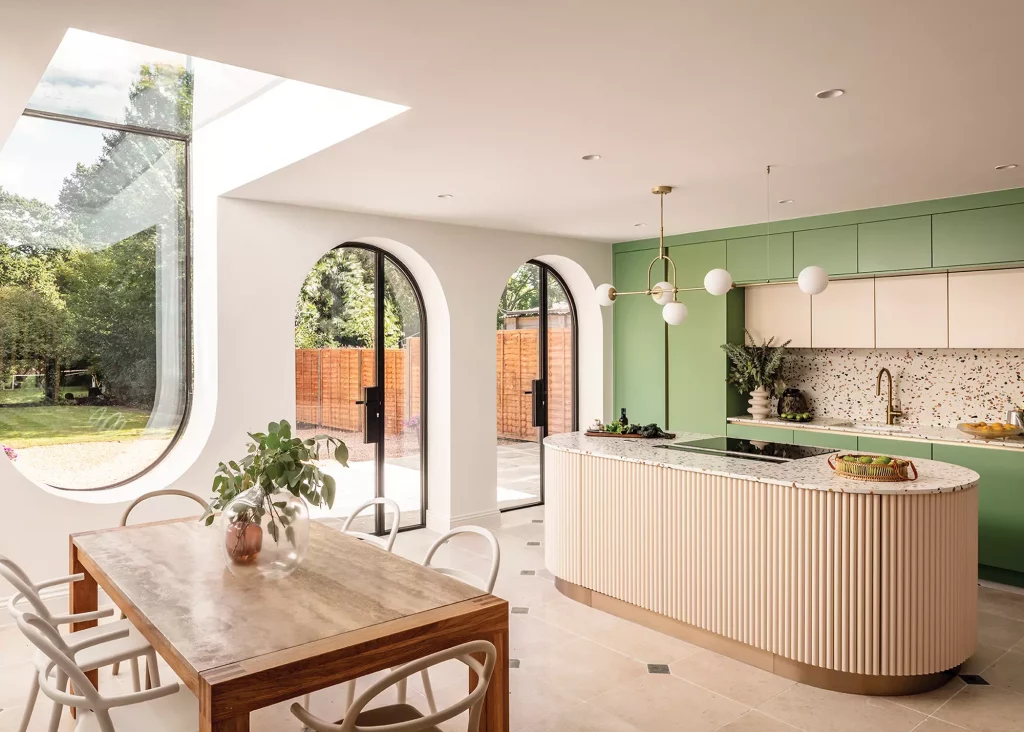
Photo: Marcus Peel
The levels are defined thanks to floor-to-ceiling timber panels, which you can see between to maintain the open feel and allow light to travel through.
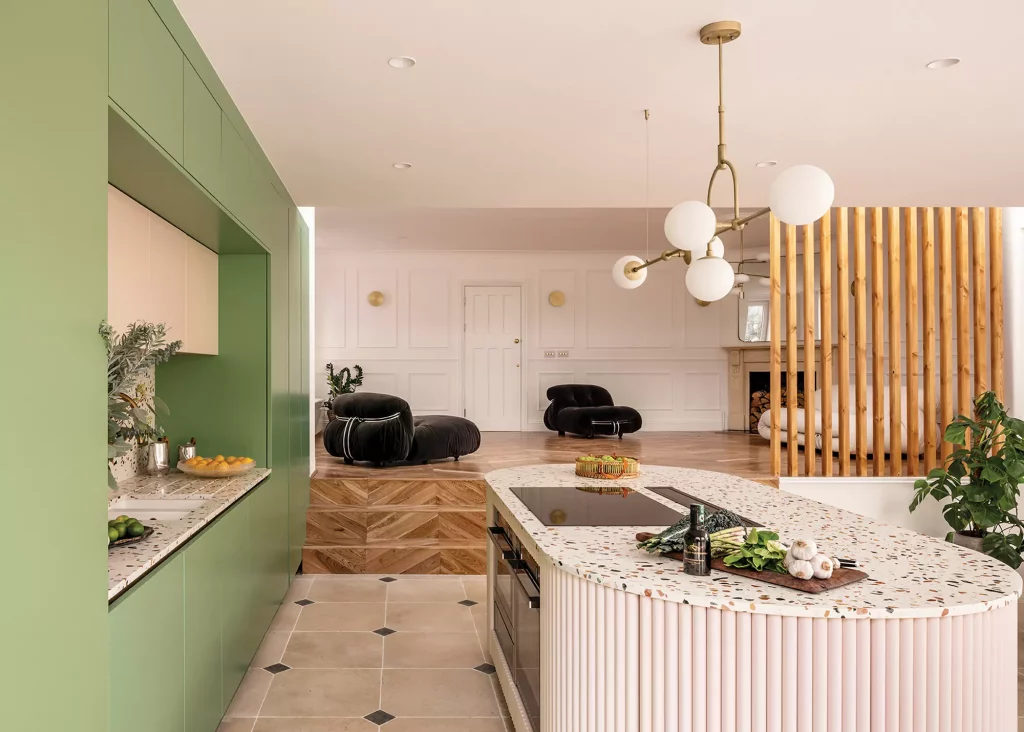
Photo: Marcus Peel
Glass has been used in clever ways to create focal features in the serene material palette, such as the up-and-over frameless box that also acts as a curved window seat and the large rooflight over the steps to separate the zones.
Read More: 12 Amazing Glazing Ideas for Your Home
ARCHITECT INSIGHTBen Ridley, director at Architecture for London, answers your questions on how to maximise open-plan living through clever design: Q: What are the key considerations when creating an open-plan space? A: Open plan can allow living areas to have great natural light and generous volumes. But It’s worth introducing zoning to help differentiate areas. Also, ceiling heights can appear lower in relative terms to the large floor area of the open plan room, so it’s worth considering higher ceilings or even double height volumes. Q: What design tricks are there to zone? A: A change in floor level of perhaps two or three steps or even simply a change in floor finish between spaces will help with this. You can also consider retaining part of a wall to create some separation. Even furniture or kitchen islands can zone spaces effectively. Q: What lighting should be used? A: Open plan spaces should have better natural light as they tend to have windows in multiple orientations that catch sunlight at different times of day. Artificial illumination should be considered in depth. We use good quality LED down lights with accents in the form of strip lights and a separate 5 amp circuit for table and floor lamps. Switches positioned at the entrance should control lighting in the whole open plan space. Q: How can you tackle noise and mess? A: Creating a second living room or snug elsewhere in the house is a good solution. This could be a space for quiet activities or for watching TV that is separate to the open plan volume. We always recommend lots of storage as the best solution for keeping spaces tidy! Q: Will it be more expensive to heat? A: Heating an open plan space shouldn’t be an issue if the house is properly insulated and airtight. Underfloor heating is best in a large room as this will distribute heat more evenly, rather than radiators which send heat up the walls towards the ceiling. Q: Does open plan still work with people spending more time at home? A: Ideally a separate room elsewhere in the house for working and studying is best. If this isn’t possible, the open plan space could be designed with some flexibility to close part of it off (called broken plan). This could be achieved with double sliding doors, which could even be acoustic rated to reduce sound transfer. |
Architecture for London created the extension and renovation to this Edwardian terraced house in North London. The redesign has resulted in an open layout with views through to the garden seen from the front door.
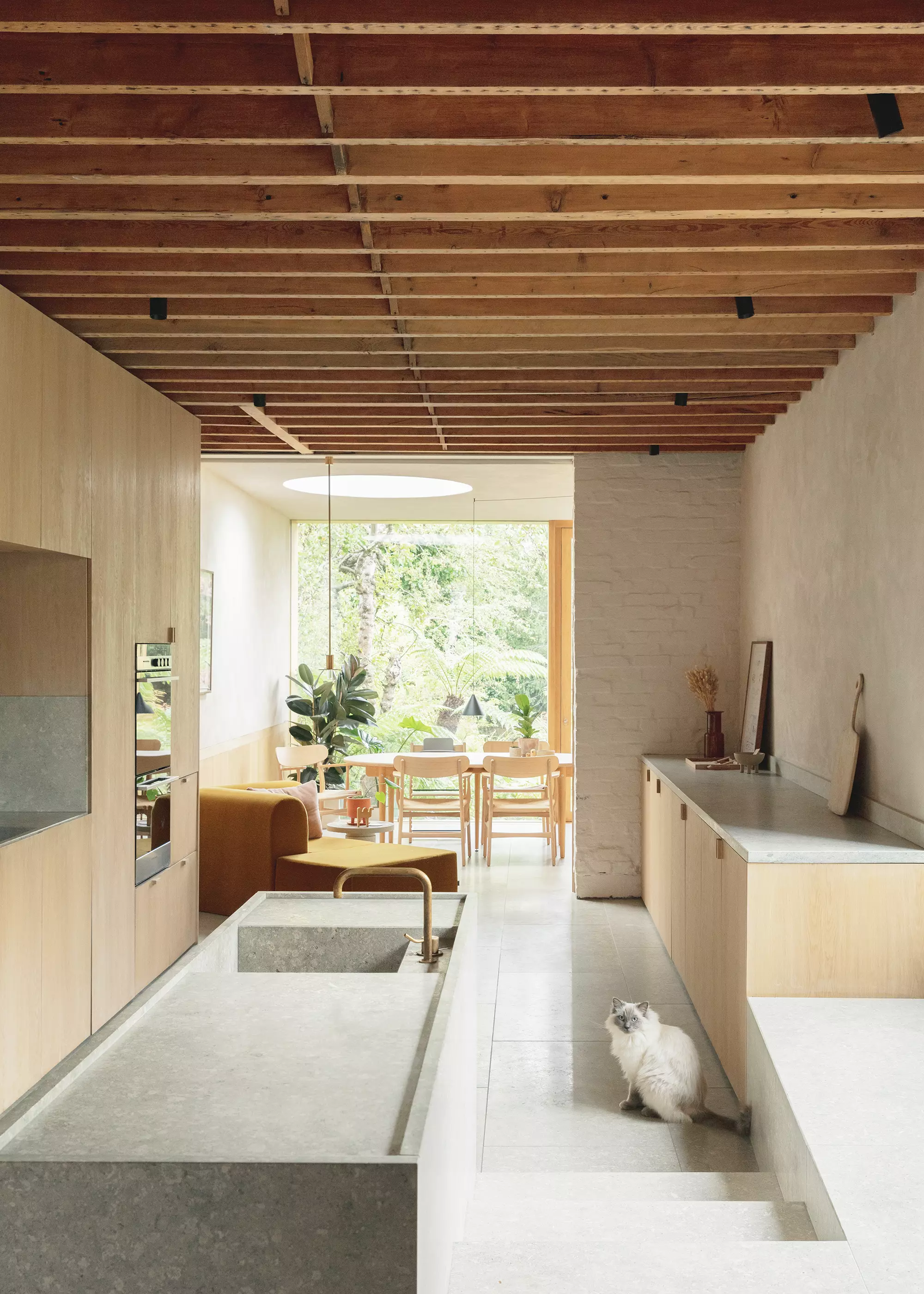
Photo: Christian Brailey
Built-in elements help to zone spaces, from the shoulder-height wooden partition beside the entrance through to the partial wall between the kitchen and dining area.
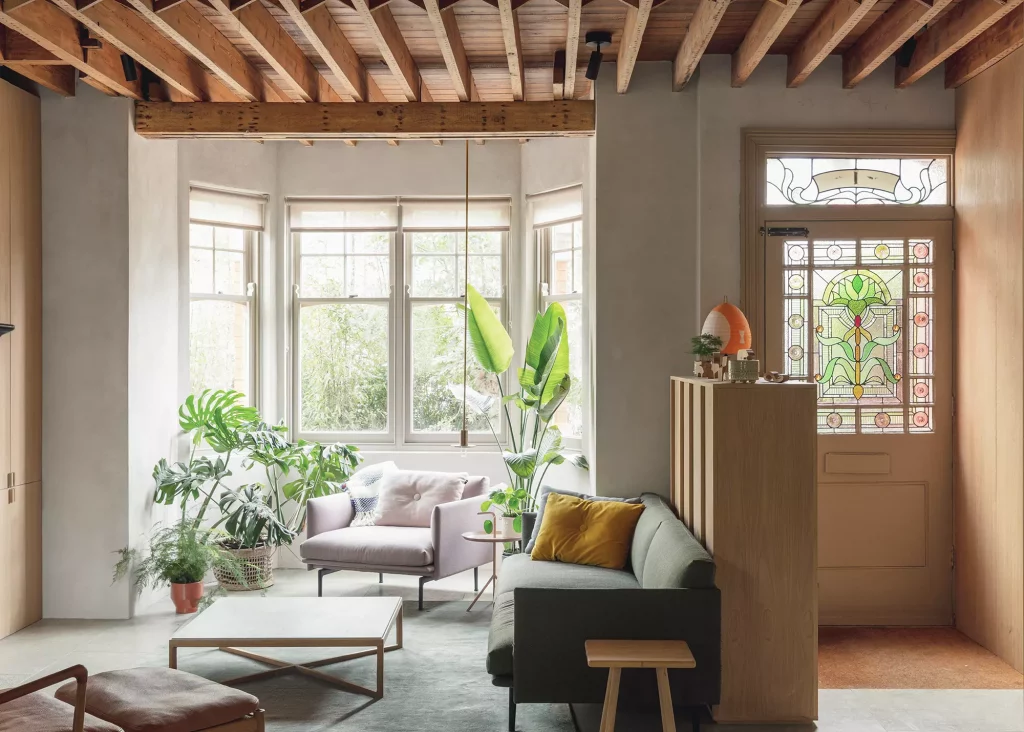
Photo: Christian Brailey
Low energy use and thermal efficiency were key to the scheme, with triple glazing, plus an airtight layer and insulation added to the building envelope.
See More: Period Renovation Ideas
These stables were converted into a house in the 1950s, but the property was in a poor state and in need of renovation. Delve Architects stripped the building back to expose its original character and added a timber frame extension.
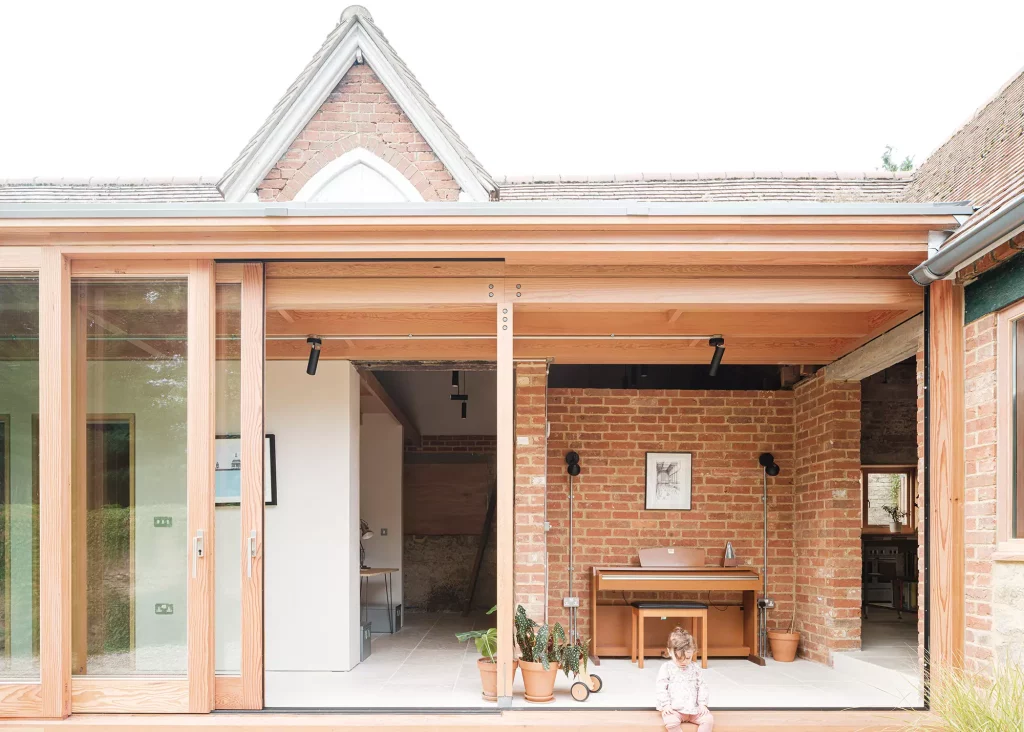
Photo: Fred Howarth
The living areas are open plan, with views round corners and through open doorways helping to zone and define spaces.
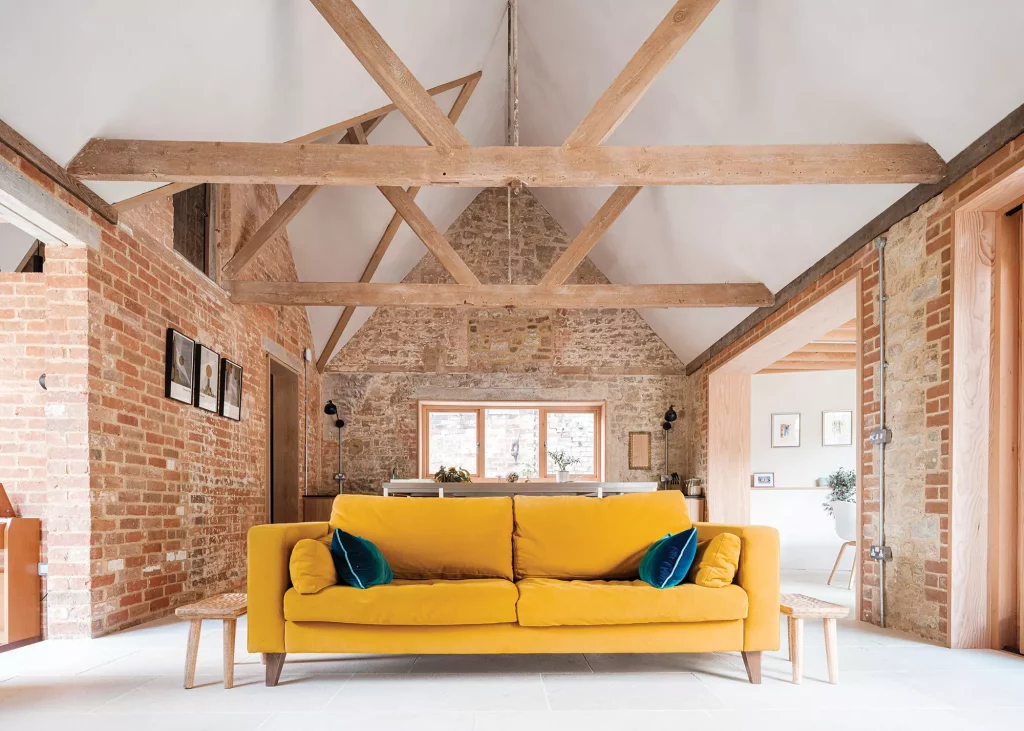
Photo: Fred Howarth
The single-storey property benefits from beautiful details of the building’s agricultural past, such as stone and brick walls and timber beams in lofty vaulted ceilings.
Looking for more Inspiration? Look at these Brick Design: The Best Brick Ideas for your Project
